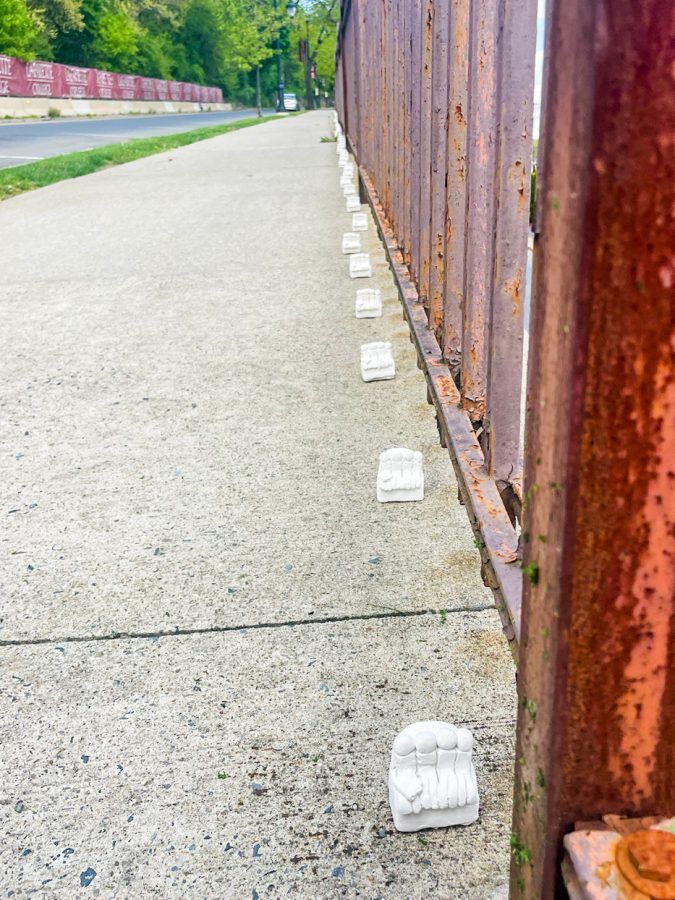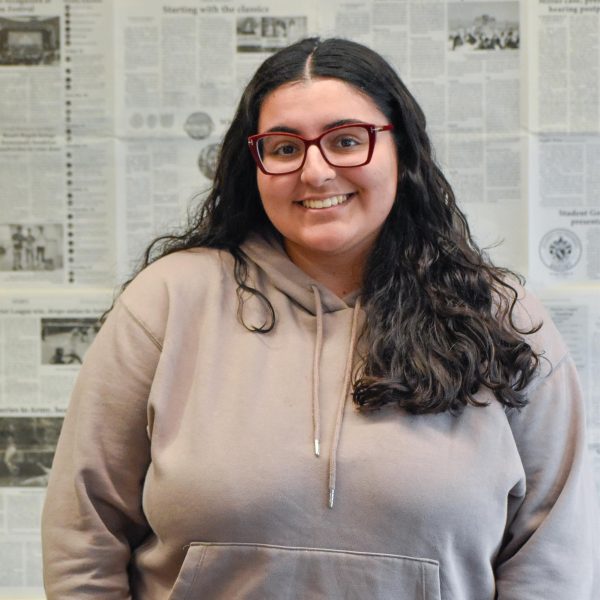Residents of College Hill may have noticed the presence of various groups of duplicate sculptures scattered around campus recently. These sculptures, from hands to spoons to animals, are the work of art professor Nestor Gil’s Sculpture I class, the culmination of a project called “The 100.”
The project, as the name suggests, required students to make one hundred sculptures using the same mold.
Tess Boyler ‘25 and Ella Dalgliesh ‘25, both students in the class, described the process of creating the sculptures as something catered to each of their own personal experiences.
“Going up to the project we [were] doing a slideshow about sacred things in art,” Boyler said. “We based what we made around what is sacred to us. So that’s what got our ideas rolling.”
“[Professor Gil] asked you about, ‘What’s something that’s, kind of, like sacred to you?'” Dalgliesh said. “And you make a clay form or sculpture of that, and then once you decide that that’s what you want to make copies of, then you make a mold of that sculpture.”
Both Boyler and Dalgliesh felt that the personal nature of the sculptures allowed them to combine their art with things that are meaningful to them. Dalgliesh’s sculptures are models of one of her family’s holiday traditions—reading “‘Twas the Night Before Christmas” together as a family — and Boyler’s sculptures are models of plant life that remind her of home.
“I chose ivy leaves because I live in [Watson] Courts, and I was coming home one day, and I saw it growing up the side of the building,” Boyler said. “It reminded me of home and where I spend my summers, and it just made me feel really comfortable and safe.”
“I really started to think a lot about my family and family traditions that are very sacred to me,” Dalgliesh said. “And so I made a little sculpture of that.”
Other sculptures include models of a hand offering a “pinky-promise,” someone hugging their knees and spoons.
According to Dalgliesh and Boyler, the placement of the sculptures was not random — each student in the class decided where on campus would best fit the meaning of their projects.
“I decided to put it on the walkway kind of near the arts campus … because it’s the first place where you are driving up to campus with your family and your family kind of leaves without you,” Dalgliesh said, “And so just that idea of that, even when your family leaves, you still have all these traditions.”
The sculptures being placed around campus allowed other students in the community to become exposed to the class’ art. Boyler’s sculptures were stationed on a path on the way to Gilbert’s.
“We spent so long working on this, and instead of just putting it out in the front hallway, in the sculpture studio, [we put it] out for it to be perceived … and just to get a sense of how art being out in the real world is being perceived by other people,” Boyler said.
“I think when you put them on campus, everyone is forced to look at them,” Dalgliesh said. “You can literally see their minds turning trying to see what it means, and I think that’s just super cool. Because also, it might mean one thing to the artists and it could mean like a totally different thing to someone else.”




















































































































